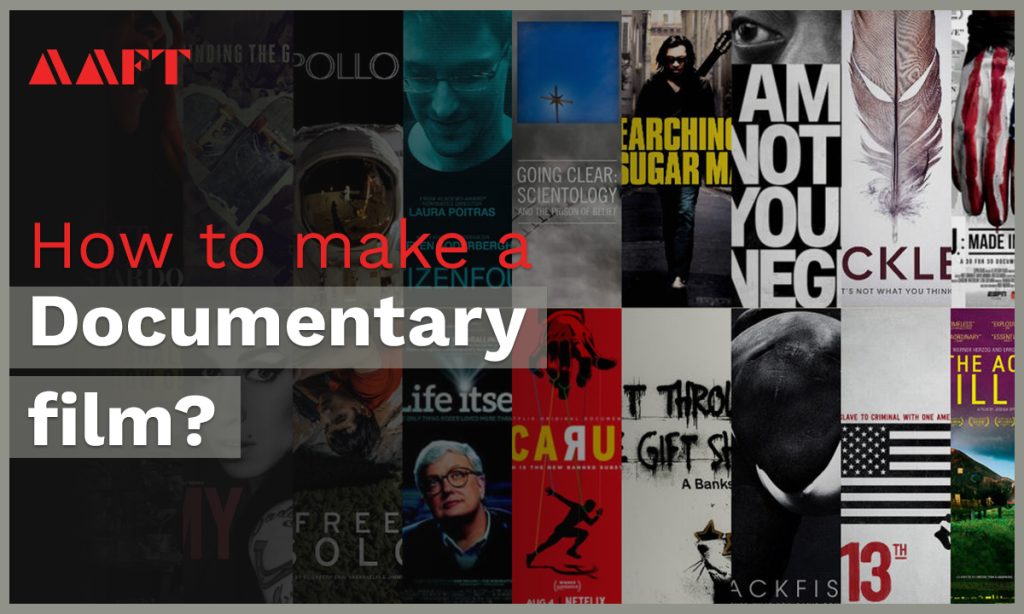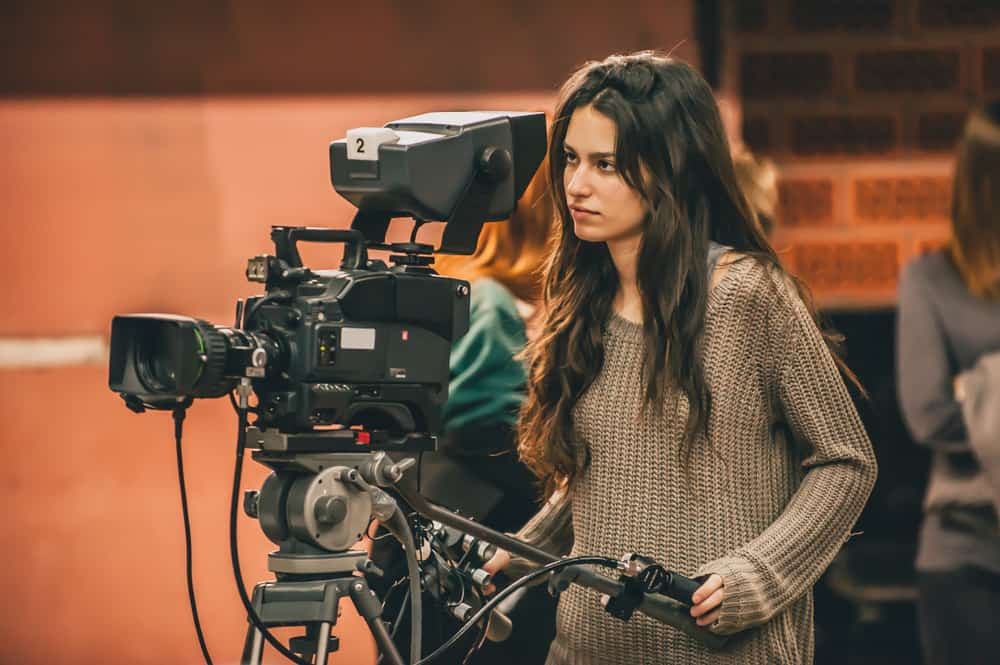How to Make a Documentary Film: A Step-by-Step Guide
Bon Voyage! to an insightful journey around the field of documentary filmmaking, where authenticity is given paramount importance and creativity exceeds the bounds of reality. This prelude will take you on a wonderful journey through the complexities and subtleties of this potent and engaging art form.
Documentary Filmmaking is a special form of storytelling that has the power to inform, motivate, and effect change. It’s a potent instrument that enables filmmakers to delve into contemporary concerns, tell undiscovered tales, and illuminate many viewpoints. One will learn vital tips on how to make a documentary as we get into the meat of this tutorial, from ideation and funding to production, editing, and dissemination.
You will receive documentary tips, resources, and financing techniques as we explore the world of documentary filmmaking, giving you the skills and resources needed to make compelling and stimulating documentaries. This manual is your compass to navigate the always-changing field of documentary storytelling, whether you’re a budding filmmaker or an experienced professional.
Read Also: Everything You Need to Know About Making A Short Film
Do you want free career counseling?
Ignite Your Ambitions- Seize the Opportunity for a Free Career Counseling Session.
- 30+ Years in Education
- 250+ Faculties
- 30K+ Alumni Network
- 10th in World Ranking
- 1000+ Celebrity
- 120+ Countries Students Enrolled
Documentary filmmaking is a testament to storytelling’s limitless possibilities in the world of cinema. It’s a place where truth manifests in all its complexity, ugliness, and beauty, frequently making a lasting impression on both filmmakers and viewers. Welcoming you to a thorough manual that will explain the complex process of making engrossing films and cover crucial topics such as documentary resources, finance, editing, and distribution.
Documentary Resources are understood as prior to setting out on a documentary expedition, it is important to put together a toolbox of information, contacts, and gear. Developing concepts into powerful documentaries frequently calls for. The magic really happens at the post-production stage of a documentary. Thus, Documentary editing is another key part of Documentary filmmaker Explore the craft of editing, where unprocessed video is transformed into a gripping story. Documentary distribution strategies are put together to ensure that, a documentary finds its correct audience.
This manual is your compass for navigating the challenging and exciting world of documentary filmmaking, whether you’re an experienced documentarian wanting to hone your craft or a prospective documentarian taking your first steps. It’s about time to go off on a trip where true experiences are transformed into impactful stories that speak to the minds and hearts of individuals all across the world.
Read Also: Unforgettable Scenes that Define the Magic of Indian Cinema
What is a documentary?
A documentary is a non-fiction video or motion picture that tries to record and convey actual people, places, events, or problems. It acts as a vehicle for narrative and knowledge dissemination, illuminating diverse facets of the world, frequently in a factual and impartial way.
Why make a documentary?
Documentaries are produced for a variety of purposes, such as education, information, inspiration, and awareness-raising. These give filmmakers the chance to investigate and present captivating narratives, record historical occurrences, advance social change, or present individual perspectives on important issues.
Do you want free career counseling?
Ignite Your Ambitions- Seize the Opportunity for a Free Career Counseling Session.Read Also: Why Traditional Ads Still Capture Our Attention
What are the different types of documentaries?
Documentaries come in a variety of forms, such as:
Read Also: Unforgettable Scenes that Define the Magic of Indian Cinema
- Expository documentaries: These give factual information while frequently presenting a strong argument or viewpoint.
- Observational documentaries: They record and observe actual events sans the direct involvement of the filmmaker.
- Interactive Documentaries– Documentaries with a participatory element that frequently makes use of digital platforms engage viewers in an engaging experience.
- Mockumentaries: These provide fictionalized storylines in a documentary style, fusing fiction and reality.
- Biographical Documentaries– Documentaries about a person’s life and experiences are called biographies.
- Nature and Wildlife documentaries: Showcasing the natural world and its inhabitants.
- Social Issues Documentaries: Addressing sociological or political issues.
- Historical documentaries: Examining the relevance of historical events.
Each style caters to various storytelling requirements while serving a distinct purpose.
A Step-by-Step Guide to Making a Documentary
Documentary filmmaking is an effective medium for sharing true stories, bringing attention to pressing situations, and igniting change. If you’re thinking of filming a documentary, the following step-by-step instructions will help you get started:
Read Also: Why Traditional Ads Still Capture Our Attention
Documentary filmmaking is an effective medium for sharing true stories, bringing attention to pressing situations, and igniting change. If you’re thinking of filming a documentary, the following step-by-step instructions will help you get started:
Step 1: Choose a Topic
Find a subject that interests you deeply to start. During the course of the endeavor, your devotion will be fueled by your passion.
Think about the information you want to learn more about and the narrative you want to tell. Every documentary’s heart is a believable story.
Step 2: Do Your Research
Find a subject that interests you deeply to start. Throughout the project, your devotion will be fueled by your passion.
Think about the information you want to learn more about and the narrative you want to tell. Every documentary’s core is a believable story.
Step 3: Write a Treatment
Make a treatment document detailing the plot, pacing, and visual style of your movie. This will function as your production road map.
Include information about the narrative’s progression, significant interviews, and any graphic components you intend to use.
Step 4: Secure Funding
Funding is frequently a problem, but there are many options. You can look into crowdfunding portals, submit a grant application to film organizations, or even self-finance your project.
For the purpose of luring in possible investors or sponsors, create a persuasive pitch and budgetary plan.
Step 5: Shoot Your Film
Here is where the action in your documentary begins. Be willing to put in a lot of effort, maintain your composure under pressure, and be adaptable. Get the information you need to tell your tale accurately by conducting interviews, gathering video, and assembling images.
Step 6: Edit Your Film
Put all the components you’ve gathered together in the editing area. Create a story that is in line with your treatment and storytelling objectives. Make sure your film properly communicates its intended message by taking your time during the editing phase.
Step 7: Share Your Film
There are several ways to spread the word about your documentary. Think about distributing it online, hosting screenings, entering it in film festivals, or even looking into theatrical distribution.
Advertise your movie by interacting with your audience on social media, in conversations, and during Q&A sessions.
Conclusion
Certainly producing a documentary requires a lot of work, but the benefits can be significant. Don’t be afraid to start this artistic journey if you have a tale that needs to be told. One can make a documentary that informs, inspires, and has an influence on both you and your audience by following these steps and putting your heart into your work. So take the jump and let your documentary grow into a potent narrative and change-making tool.
Read Also: Top 5 Emerging Stars of Indian Web Series
FAQ
How long does it take to make a documentary?
A documentary’s duration of production can also vary greatly, although it is often far longer than the time required to make a fiction film. This is due to the fact that documentaries frequently necessitate additional research, interviewing, and production.
Where can I learn more about documentary filmmaking?
To discover more about making documentaries, there are a lot of resources accessible. Among these resources are:
1. The books “Making Documentary Films” by Michael Rabiger and “Directing the Documentary” by Bill Nichols. are just a couple of the many books about documentary filmmaking that are available.
2. Websites: Numerous websites, like Documentary.org and No Film School, are devoted to the creation of documentaries.
3. Seminars and Courses: There are numerous documentary filmmaking seminars and courses available. These can be a terrific way to gain feedback on your work and learn the fundamentals of documentary filmmaking. You can also, join AAFT’s filmmaking courses. Here we offer, B.Sc and M.sc in Acting, Cinematography, Direction, and production. There are also one-year diploma courses in post-production, Film and TV production, etc., Short-term courses in Production Direction & TV journalism, screenplay Writing, etc,
How much does it cost to make a documentary?
According to the documentary’s length, intricacy, and production values, the cost of making it might vary greatly. Nevertheless, it is typically a lot more costly than producing a fiction movie.








